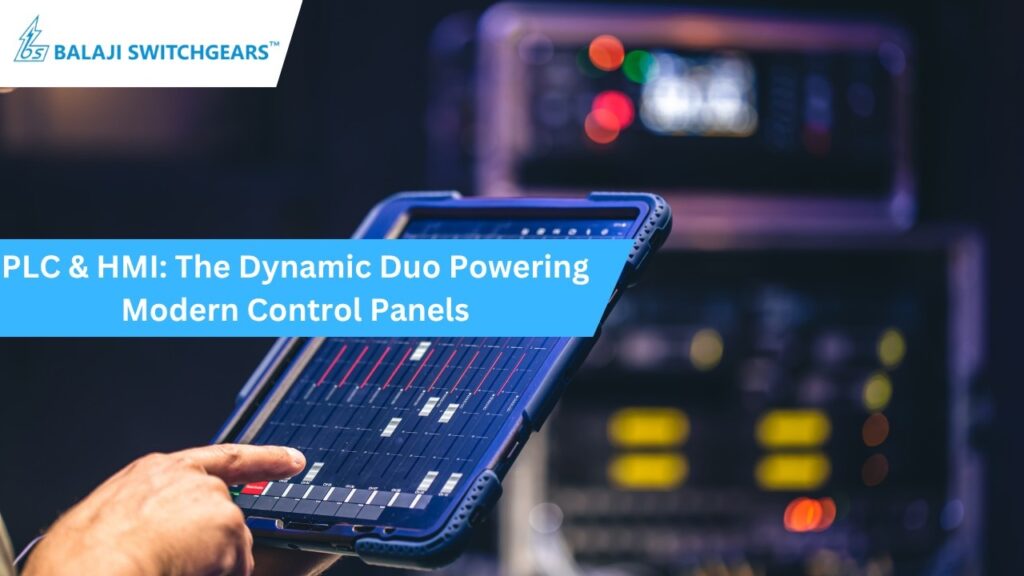In today’s era of industrial transformation and smart manufacturing, modern control panels are no longer simple boxes filled with wires and switches. They are the central nervous systems of entire operations, driving automation, monitoring performance, and enhancing efficiency. At the heart of this evolution lies a powerful partnership — PLC (Programmable Logic Controller) and HMI (Human Machine Interface).
Together, they form the brain and face of electrical control panels, enabling industries to move toward smarter, safer, and more efficient operations. But what makes this pair so dynamic? And why are they so essential in the world of plc industrial automation? Let’s break it down in simple terms.
Understanding the Role of PLCs in Control Panels
A PLC is essentially the decision-maker inside an electrical control panel. It’s an industrial computer designed to receive inputs, process logic, and then control outputs. This could be anything from starting a motor, opening a valve, switching off a pump, or adjusting a temperature setting based on sensor data.
Key features of a PLC include:
- Reliability in harsh industrial environments
- Real-time processing of automation tasks
- Easy programming and troubleshooting
- Ability to connect with sensors, actuators, and communication networks
In plc industrial automation, the PLC acts like a highly focused brain — performing repetitive tasks with precision, speed, and consistency, 24/7.
What is an HMI and Why It Matters?
While the PLC makes decisions behind the scenes, the HMI is what operators use to interact with the system. It displays information in real-time, alerts users about errors or failures, and allows input commands through touchscreens or control panels.
In short, the HMI is the “face” of the modern control panel, providing visual access to all the operations being handled by the PLC.
With intuitive graphics, dashboards, and live data views, HMIs allow operators to:
- Monitor system health and performance
- Start/stop equipment or change parameters
- Access alarms and historical data
- Troubleshoot faults instantly
This combination of intelligence (PLC) and interaction (HMI) allows businesses to keep operations running smoothly — and to adapt quickly when things don’t go as planned.
How PLC & HMI Work Together
Imagine a packaging line in a factory. A PLC is programmed to control various parts — conveyors, filling machines, labelers, sensors, etc. It constantly gathers data and makes logical decisions based on that input.
The HMI, placed on the front of the control panel, shows the status of all these components. It might display:
- Conveyor speed
- Bottle count
- Alarm status
- Shift production targets
If an issue arises — say a jam in the line — the operator is alerted immediately via the HMI screen. With a tap or two, they can take action, like stopping the system or resetting the error.
This seamless coordination between PLC and HMI eliminates the need for manual monitoring and intervention, greatly improving productivity and minimizing downtime.
The Role of PLC & HMI in Modern Control Panels
Today’s modern control panels are far more than mechanical boxes — they are intelligent hubs for plant-wide communication. In this setup, PLC and HMI systems bring key benefits:
1. Real-Time Visibility
Operators can view live system metrics, process flow, and equipment performance at a glance, leading to faster decisions.
2. Remote Monitoring
Many HMIs are now web-enabled, allowing managers or engineers to view and control operations from mobile devices or remote locations.
3. Data Logging & Reporting
PLC-based systems collect historical data which can be used for preventive maintenance, performance analysis, or compliance audits.
4. Scalability
Need to expand your operation? PLC and HMI-based control panels can be easily scaled up with additional I/Os and screen pages.
5. Increased Safety
From emergency stop buttons to automated shutdowns in unsafe conditions, these systems play a major role in ensuring operator safety.
Industry Applications of PLC & HMI Integration
The use of PLC and HMI in control panels spans nearly every sector:
- Manufacturing plants: for machine control, batch processing, and material handling
- Water treatment: for pump stations, chemical dosing, and filtration control
- Automotive: for assembly line coordination and quality testing
- Power & energy: for transformer protection and substation monitoring
- Pharmaceuticals & food: for process validation, temperature control, and hygiene monitoring
Wherever precision, reliability, and automation are needed — the PLC and HMI duo stands ready.
Why This Matters Now More Than Ever
In the next few years, automation will not just be a competitive advantage — it will be a necessity. With growing labor shortages, increased demand for quality and consistency, and a shift toward digital transformation, having intelligent electrical control panels powered by PLC and HMI is the way forward.
Moreover, these systems reduce errors, save time, and bring transparency to operations — all while keeping safety and compliance in check.
Conclusion: Balaji Switchgears — Your Partner in Intelligent Control
At Balaji Switchgears, we believe that future-ready infrastructure starts with intelligent, reliable, and robust control systems. Our expertise lies in designing and supplying modern control panels that integrate advanced PLC and HMI technologies from global leaders — ensuring optimal performance, flexibility, and ease of operation.
Whether it’s a standalone panel or a plant-wide automation project, our solutions are tailored to your industry needs — with safety, scalability, and simplicity at the core.
Balaji Switchgears — Empowering Industries with Smarter Control, Every Step of the Way.

